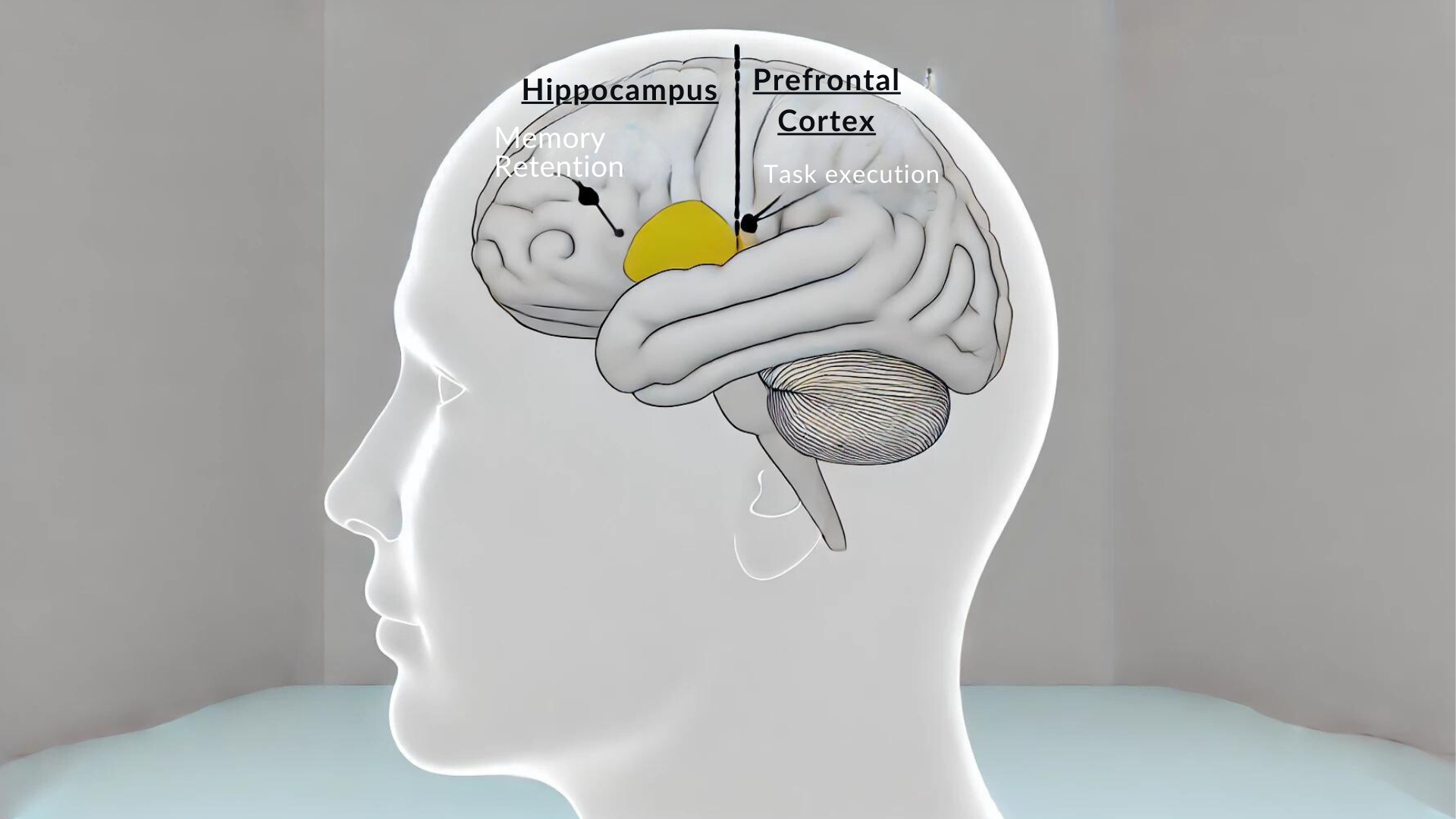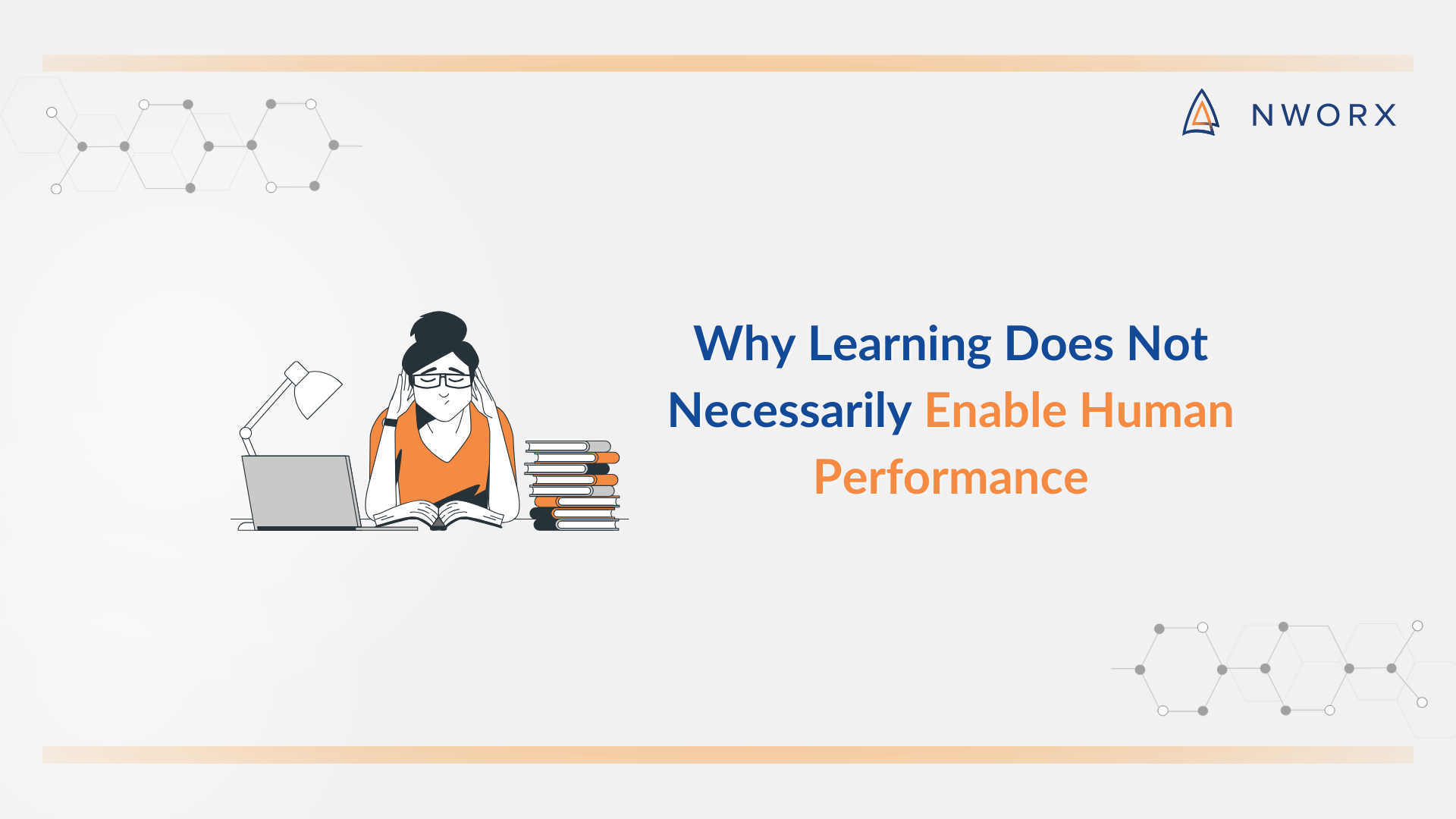Conventional wisdom suggests that learning directly translates to improved professional performance. Organizations worldwide invest billions in learning and development programs, expecting significant employee performance and productivity improvements. However, despite these investments, the anticipated returns often fall short. Actionable experience is far more effective than traditional learning, here’s why:
The Disconnect Between Learning and Performance
Traditional learning methods often emphasize theoretical knowledge over practical application, creating a disconnect between what is learned and what is performed. McKinsey’s research reveals that only 40% of companies align their learning strategies with business goals, leading to a focus on measurement rather than actionable outcomes. This misalignment means that while employees might learn new information, they struggle to apply it effectively.
Neuroscience Behind Learning and Action

Figure 1.1: A diagram illustrating the hippocampus and prefrontal cortex functions.
Understanding the roles of different brain regions in learning versus performing tasks provides insight into why learning alone may not lead to better performance. The hippocampus, responsible for memory retention, differs significantly from the prefrontal cortex, which governs task execution and decision-making. Neuroscientific studies show that the prefrontal cortex is more engaged during performance-related activities, while the hippocampus is primarily involved in learning. This neurological distinction highlights why practical, real-world experiences are essential for effective performance enhancement.
Adding to this, the ‘Forgetting Curve’ theory, introduced by German psychologist Hermann Ebbinghaus, illustrates how newly acquired knowledge tends to fade from memory unless reinforced. This explains why the initial boost in knowledge and skills from training often diminishes over time, leading employees back to their old habits.
The Power of Practical Application
Real-world tasks significantly enhance performance by engaging both cognitive and motor skills. Bain & Company emphasizes that hands-on experience and capability-building programs are crucial for developing practical skills. Employees involved in practical projects show a 30% improvement in performance compared to those who undergo only theoretical training. This approach ensures that knowledge is not just acquired but effectively integrated into actionable skills, leading to improved job performance.
Beyond Learning: Emphasizing Real-World Experience
The traditional focus on learning as the primary driver of professional effectiveness is flawed. Instead, organizations should prioritize real-world application and experience. This shift requires a fundamental change in how we approach employee development. Companies should move away from generic training programs and instead create environments that encourage continuous learning through doing. Practical tasks, real-time problem-solving, and on-the-job experiences should form the core of employee development strategies. Click here to understand more about the key to unlocking effective workplace actions.
Consider the example of an international logistics company that shifted from conventional training programs to a mentorship-based model. New hires were paired with experienced employees, allowing them to learn through real-world tasks and challenges. This approach not only improved performance but also accelerated the onboarding process.
Conclusion
To truly enhance workplace performance, organizations must shift their focus from traditional learning methods to practical, actionable experience. By integrating real-world tasks into training programs and emphasizing real-world experience over theoretical learning, companies can ensure that their employees are equipped with the skills necessary for effective performance. This approach bridges the gap between learning and doing, driving significant performance improvements.



NWORX - Why is preparation important in the workplace
[…] over practical application, creating a disconnect between what is learned and what is performed. Click here to learn more about the disconnect between learning and […]